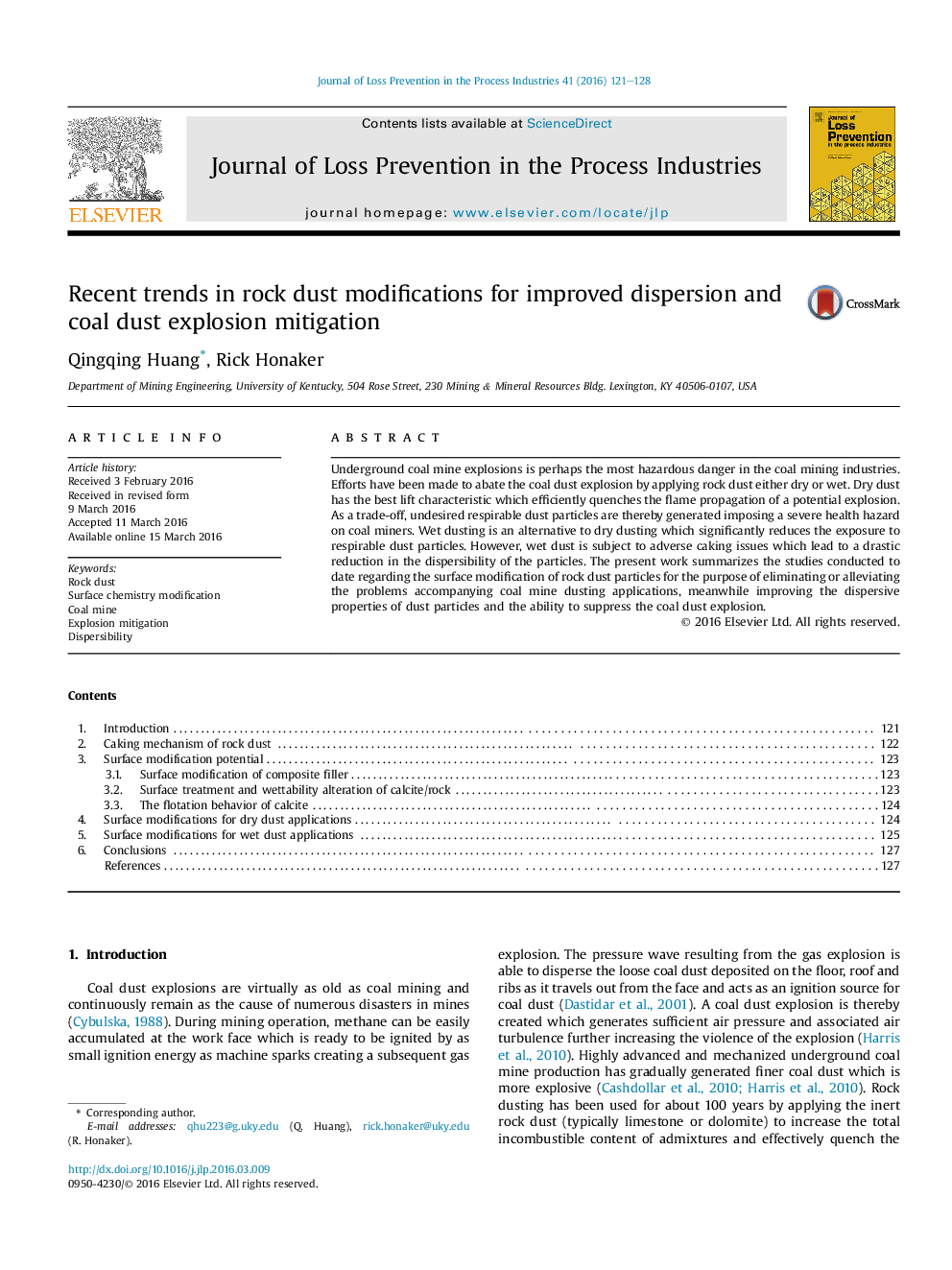| Article ID | Journal | Published Year | Pages | File Type |
|---|---|---|---|---|
| 586036 | Journal of Loss Prevention in the Process Industries | 2016 | 8 Pages |
•Issues accompanying both dry and wet rock dusting applications in underground coal mine were addressed.•Rock dust surface modification potential was briefly recapitulated.•Briefly summarized the study conducted to date for rock dust modification both in dry and wet application.•Comparison with respect to rock dust modification investigations was made.•Suggestions for future study were recommended.
Underground coal mine explosions is perhaps the most hazardous danger in the coal mining industries. Efforts have been made to abate the coal dust explosion by applying rock dust either dry or wet. Dry dust has the best lift characteristic which efficiently quenches the flame propagation of a potential explosion. As a trade-off, undesired respirable dust particles are thereby generated imposing a severe health hazard on coal miners. Wet dusting is an alternative to dry dusting which significantly reduces the exposure to respirable dust particles. However, wet dust is subject to adverse caking issues which lead to a drastic reduction in the dispersibility of the particles. The present work summarizes the studies conducted to date regarding the surface modification of rock dust particles for the purpose of eliminating or alleviating the problems accompanying coal mine dusting applications, meanwhile improving the dispersive properties of dust particles and the ability to suppress the coal dust explosion.
